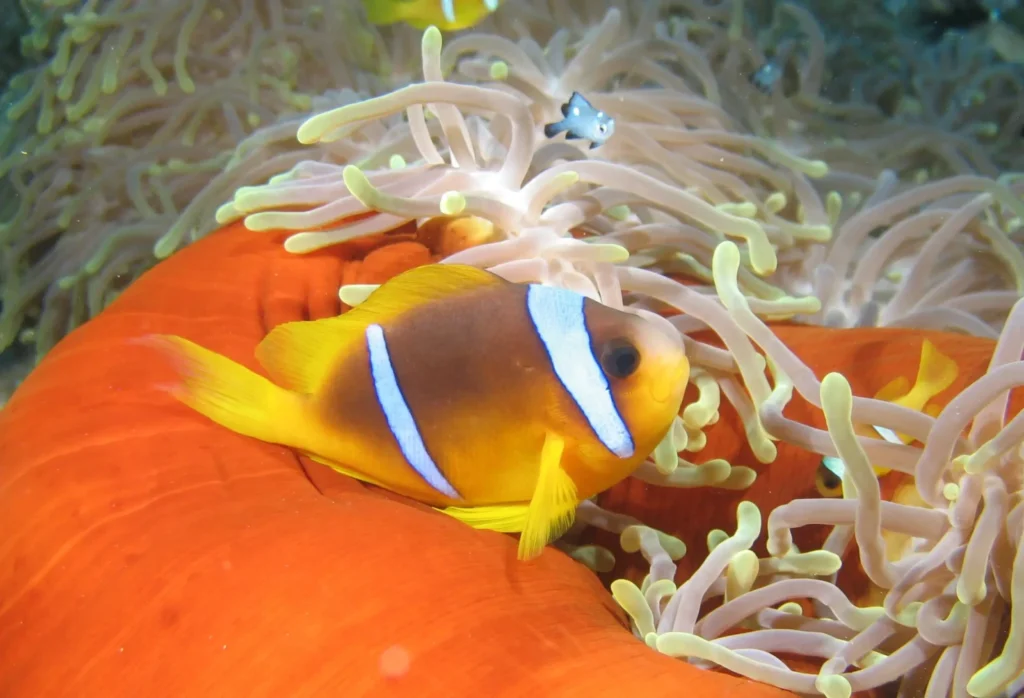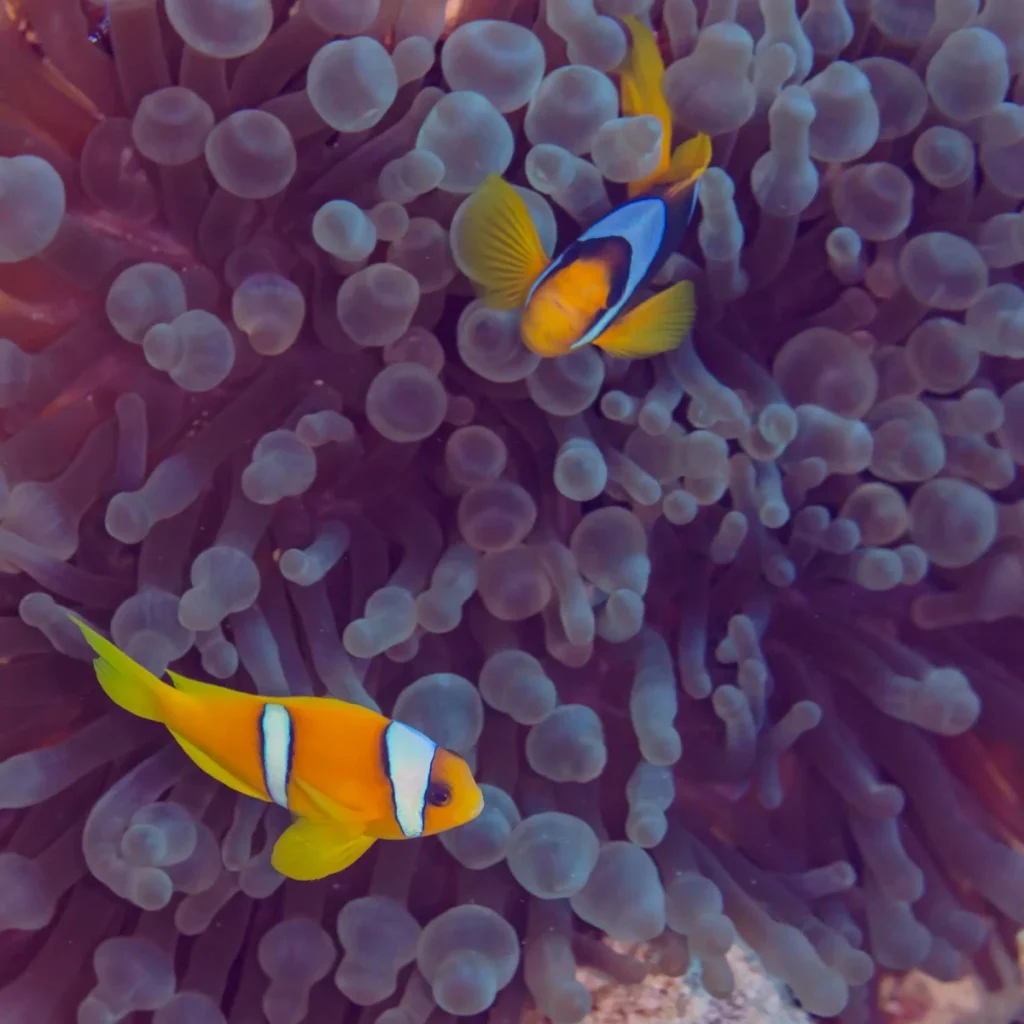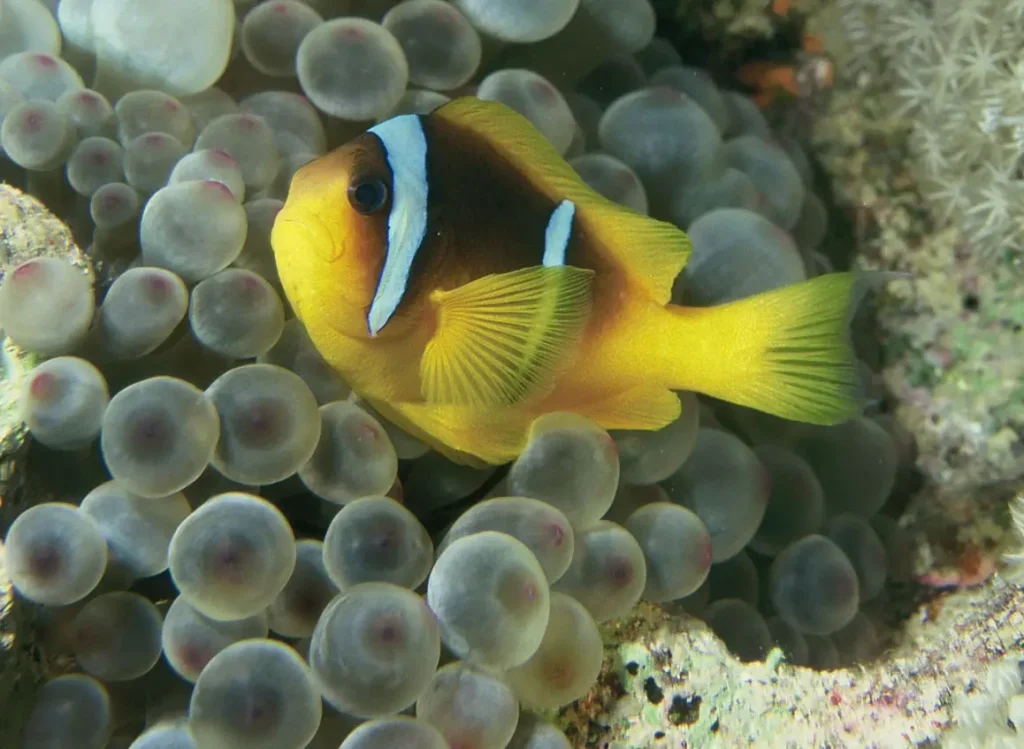Among the clownfish, one of the most prominent and well-known representatives is two-lane clown (Amphiprion bicinctus). This view is different rich yellow-orange color with two white stripes energetic behavior. It lives in the coral reefs of the Red Sea and the western Indian Ocean, where it forms a close symbiosis with several species of anemone.
✔ Bright yellow-orange color
✔ Two distinct white stripes on the body
✔ It lives in symbiosis with anemones, which protect it from predators
✔ Aggressively guards its territory
Let's learn more about this spectacular tropical reef dweller!

Scientific classification
✔ The Kingdom: Animals (Animalia)
✔ Type: Chordal (Chordata)
✔ Class: Lucheperi pisces (Actinopterygii)
✔ Row: Perch-like (Perciformes)
✔ Family: Pomacentrovye (Pomacentridae)
✔ Gender: Amphiprion
✔ View: Amphiprion bicinctus (Rüppell, 1830)
📌 Interesting!
Title bicinctus translated from Latin means "two-lane"which directly indicates its distinctive feature-two white stripes on the body.
Appearance
🔹 Body shape:
✔ Oval, slightly flattened on the sides
✔ Compact enough that you can quickly maneuver among the anemones
🔹 Color scheme:
✔ Main color – bright yellow or orange
✔ Two wide white stripes "one behind the eyes, one in the middle of the body
✔ Caudal, pelvic and pectoral fins bright yellow
🔹 Sizes:
✔ Average length: 10-12 cm
✔ Maximum length: up to 15 cm
📌 Interesting!
The color of the fish can vary from a more intense orange to light yellow, depending on the habitat.
Range and habitat
🌍 Where does the two-lane clown live?
, Red Sea
✅ Western Indian Ocean
Waters off the coast of Saudi Arabia, Sudan, Yemen, Somalia
🔹 Living environment:
✔ Prefers coral reefs at depths of 1-30 meters
✔ Often lives in cozy lagoons and coves
✔ Always lives close to sea anemones
📌 Interesting!
This species is found exclusively in the Red Sea and adjacent waters, making it endemic to this region.
Symbiosis with sea anemones
🔹 How does symbiosis work?
✔ Clown uses anemone as a shelter from predators
Instead, it protects the anemone from predators and cleans its tentacles
🔹 What kind of anemones does it co-exist with?
✔ Heteractis crispa (Crystal Rose anemone)
✔ Stichodactyla gigantea (giant anemone)
✔ Entacmaea quadricolor (bubble anemone)
📌 Interesting!
Young people can change their "home" and move to another anemone, while adult clowns stay in the same anemone for life.

Lifestyle and behavior
🔹 Social structure:
✔ Lives in groups: dominant female, male and several young individuals
✔ The largest individual – female, others are males
🔹 Defensive behavior:
✔ Territorial and aggressive, actively drives away strangers
✔ Prefers sheltered places among corals
🔹 Life span:
✔ In the wild: 6-10 years old
✔ In captivity: up to 12 years old
📌 Interesting!
If the dominant female dies, the largest male changes sex and takes its place.
Nutrition and environmental role
🥗 What does a two-lane clown eat?
✅ Small zooplankton
✅ Crustaceans
, Seaweed
🔹 Environmental role:
✔ Helps keep anemones clean
✔ Controls the abundance of small marine organisms
📌 Interesting!
Sometimes the two-lane clown "invites" other fish to clean the anemone from parasites.
Reproduction and development
🔹 Method of reproduction:
✔ Female lays eggs 200-1000 eggs
✔ The male takes care of the masonry, ventilates the eggs
🔹 Development:
✔ Larvae swim in the water column up to 2 weeks
✔ Juveniles settle among anemones after metamorphosis
📌 Interesting!
Larvae are born colorless, and their yellow color develops only after settling on the bottom.

Two-lane clown and man
🔹 Popularity in aquariums:
✅ Often found in marine aquariums
Вынос Hardy and active, but territorial
🔹 Industrial value:
✅ Grown in nurseries for sale
📌 Interesting!
Due to its active nature, the two-lane clown sometimes conflicts with other fish in aquariums.
Species conservation and environmental threats
🔹 Population status:
✅ The species is not under threat
🔹 Main threats:
Ruinuvannya coral reef destruction
Zabrudnennya ocean pollution
Pitchfork catch for aquariums
🔹 Security measures:
✔ Captive rearing helps reduce the catch of wild animals
✔ Marine reserves
📌 Interesting!
In many parts of the Red Sea, restrictions have been imposed on the catch of coral fish.
Conclusion
🐠 The two-lane clown (Amphiprion bicinctus) is a bright, energetic and territorial inhabitant of coral reefs, which is an important element of the reef ecosystem.
💡 Would you like to see this reef keeper in nature? 🌊✨